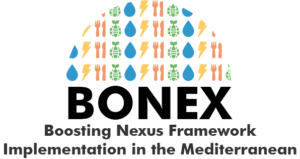Actualmente, los agricultores dependen de pronósticos meteorológicos y recomendaciones que son, o bien generales para una región de interés determinada, a menudo extensa, o altamente personalizadas a las necesidades de los agricultores (por ejemplo, al combinar variables atmosféricas a gran escala en parámetros sintéticos de interés). En ambos casos, dichos pronósticos y recomendaciones a menudo no se basan en observaciones recopiladas en o alrededor de las áreas cultivadas objetivo, o se limitan a observaciones tradicionales proporcionadas únicamente por estaciones meteorológicas, sin aprovechar la gama completa de mediciones y observaciones disponibles a través de activos espaciales europeos (por ejemplo, Galileo GNSS, Sentinel de Copernicus) y datos de radar basados en tierra.
Los objetivos de MAGDA van más allá del estado del arte, al aspirar al desarrollo de un sistema modular que los propietarios de grandes explotaciones agrícolas puedan implementar directamente en sus instalaciones, alimentando de forma continua observaciones a modelos meteorológicos e hidrológicos dedicados y personalizados, cuyos resultados se mostrarán a través de un panel de control y/o dentro de un Sistema de Gestión Agrícola.
FutureWater lidera el servicio de asesoramiento de riego de MAGDA, utilizando modelos hidrológicos a través de SPHY (Procesos Espaciales en Hidrología). El resultado esperado consiste en un servicio de riego operativo que brinde recomendaciones sobre cuándo y cuánto regar en determinados momentos durante la temporada de cultivo, utilizando como datos de entrada pronósticos meteorológicos mejorados.
Durante esta tarea, se configurará el modelo de balance hídrico SPHY para tres explotaciones agrícolas demostrativas seleccionadas en Rumanía, Francia e Italia. Finalmente, el asesoramiento de riego se validará utilizando indicadores de rendimiento (por ejemplo, productividad del agua, análisis de rendimiento de cultivos, eficiencia en el uso del agua) con datos de campo (por ejemplo, estaciones meteorológicas, sondas de humedad, mediciones de biomasa de cultivos).
 La región mediterránea se enfrenta a desafíos cada vez mayores para garantizar el suministro de agua y alimentos, ya que los países experimentan un aumento de la demanda y una disminución de la disponibilidad de recursos naturales. El enfoque del nexo pretende gestionar y aprovechar las sinergias entre sectores mediante una gestión eficiente e integrada del nexo entre agua, energía, alimentos y ecosistemas (WEFE).
La región mediterránea se enfrenta a desafíos cada vez mayores para garantizar el suministro de agua y alimentos, ya que los países experimentan un aumento de la demanda y una disminución de la disponibilidad de recursos naturales. El enfoque del nexo pretende gestionar y aprovechar las sinergias entre sectores mediante una gestión eficiente e integrada del nexo entre agua, energía, alimentos y ecosistemas (WEFE).